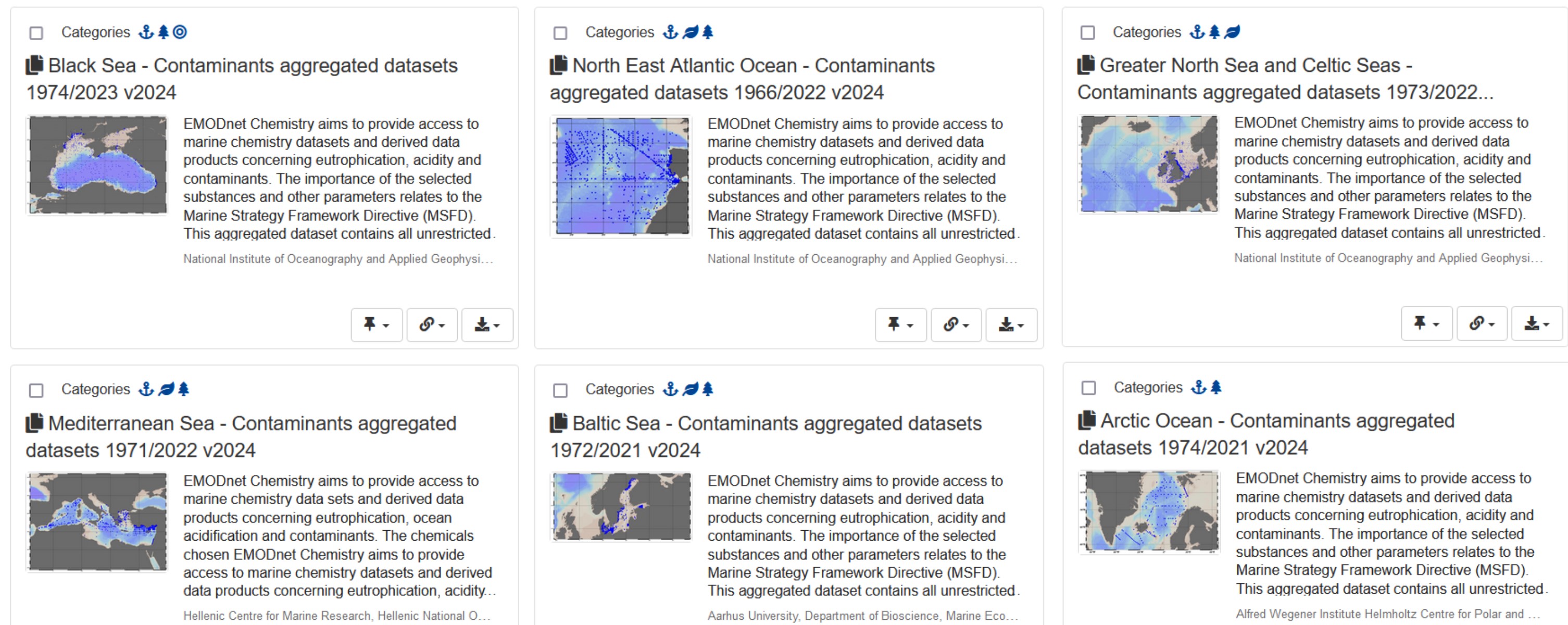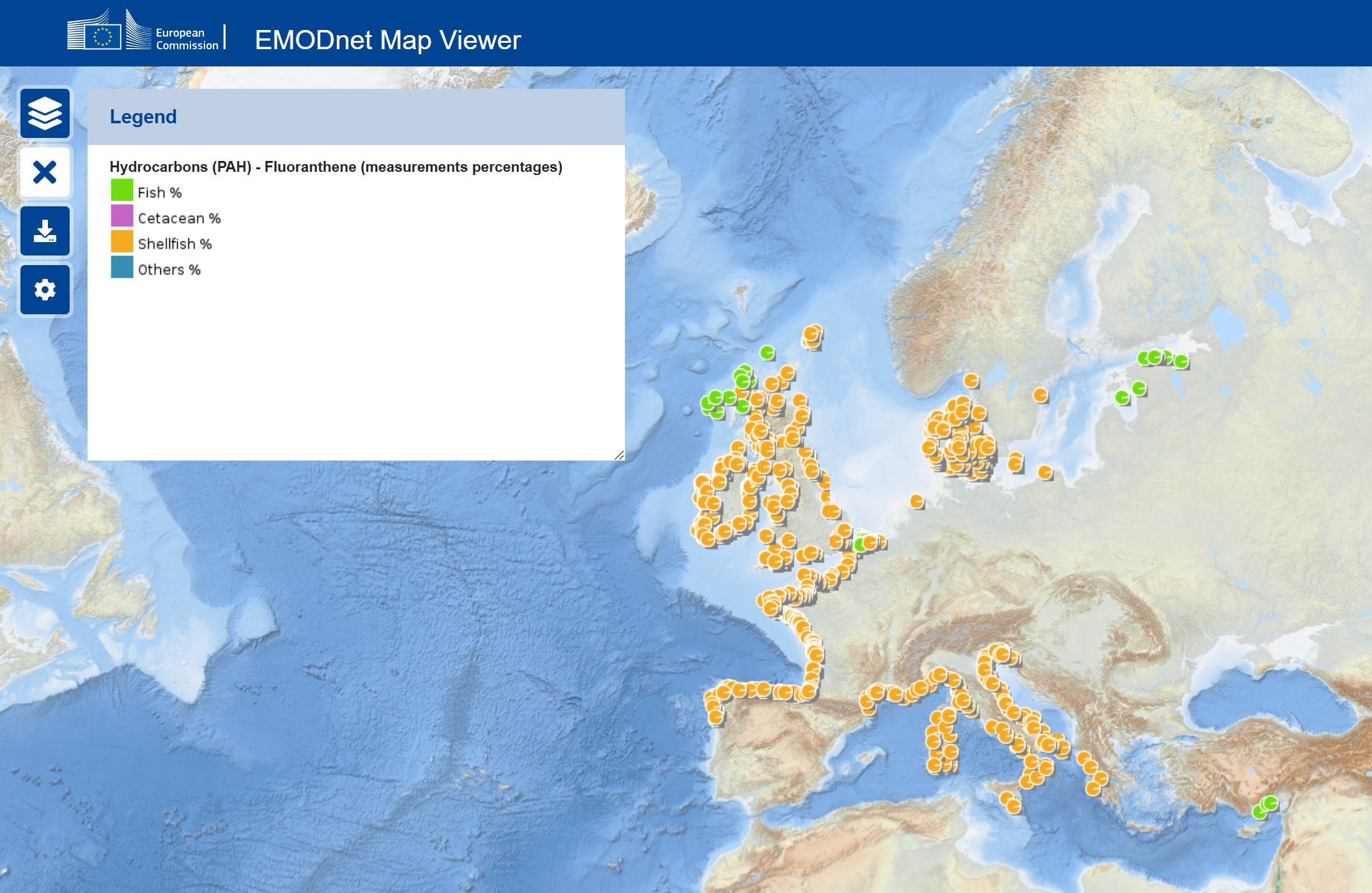In February 2025, Athanasia (Sissy) Iona, Head of the Hellenic National Oceanographic Data Centre and EMODnet Data Ingestion Scientific Coordinator presented the pollutant maps in the EMODnet Map Viewer to the EMODnet Chemistry Board of experts on the EU Marine Strategy Framework Directive (MSFD). She highlighted the recent improvements and new visualisations. EMODnet Chemistry has been interacting with stakeholders involved in the Regional Seas Conventions and the MSFD since its launch in 2009. In 2017, this contact was formalised with the establishment of the Board of experts on the MSFD. The role of the panel is to advise the Consortium on the scope and definition of data products and services from the perspective of their use in the MSFD assessments. Find out more about the work of the MSFD board on the EMODnet Portal.
On 4 February, the webinar with the EMODnet Chemistry Board of Experts on the EU Marine Strategy Framework Directive (MSFD) took place online to showcase the new and updated visualisations for marine contaminants and collect feedback for improvement.
Neil Holdsworth, from the International Council for the Exploration of the Sea (ICES), EMODnet Chemistry's partner, chaired the meeting as this expert consultation is part of ICES' commitment to ensure the implementation of EU legislation and wider open data initiatives through interaction with key stakeholders. After introducing the meeting, Holdsworth handed over to Alessandra Giorgetti from the National Institute of Oceanography and Applied Geophysics - OGS, the coordinator of the EMODnet Chemistry project. She gave an overview of the EMODnet in-site marine data service: the mission and the web portal. She also explained the EMODnet Chemistry network and the services for accessing data and data products. Giorgetti handed over the stage to Athanasia (Sissy) Iona, Head of the Hellenic National Oceanographic Data Centre (HCMR), who acts as the regional coordinator of EMODnet Chemistry for the Mediterranean and has been developing the maps for contaminants since 2021.
Iona started her presentation providing some details on 2024 data collections for contaminants, which are used by the HCMR to produce the maps. She explained that, in addition to the regional data collections, EMODnet Chemistry has recently created data collections for pollutants at European level. She also talked about the step-wise approach carried out to deliver the validated datasets, which includes data standardization, harmonization, and quality control.
The data validation process relies heavily on SeaDataNet standards, best practices and tools, as well as a commonly agreed data quality control protocol. The European data collection contains data of 7,450 different parameters, which were collected by 186 originators in 157,677 positions from 1960 t0 2023. 89% of the data are open, the rest are available under negotiation.

Figure 1 Most recently published regional pollutant datasets for the six sea basins defined by the MSFD. ©EMODnet Chemistry
Iona went on to present the maps for contaminants in the EMODnet Map Viewer. They are divided into 4 categories that provide information on the distribution of sampling stations and concentration levels in space and time in all European seas and beyond for the parameters prioritised in the Marine Strategy Framework Directive.
The categories are:
1. Concentration values
2. Contaminants in marine organisms
3. Measurements counts
4. Monitored matrices
The HCMR has recently used the data collections from 2024 to update map types 1, 3 and 4, as the previous version was based on data collections from 2022. The Institute has also created the layers for the new map category called ‘Contaminants in marine organisms’(Figure 2). These maps show - for each pollutant and for all available years - positions with percentages of all available data values per animal group. Further information on the above map categories can be found in the EMODnet Map viewer tour based on the live presentation that Iona gave during the webinar.

Figure 2 The map shows for each position the percentage of data available for fluoranthene in different organisms. ©EMODnet Chemistry
We at EMODnet Chemistry would like to thank the experts once again for their feedback, which has helped us greatly to improve. Over the years, these meetings have contributed significantly to a better mutual understanding and constructive co-operation.
Sissy Iona, Head of the Hellenic National Oceanographic Data Centre
Participants actively participated in the discussion through frequent Q&A sessions and live polling. This revealed that less than half of participants were aware that the validated unrestricted data are available upon request to RSC expert groups and/or indicator leads. Encouragingly, over 60% of participants have used the EMODnet Central Portal map viewer at some point in time.
Finally, regarding the maps entitled ‘Concentration values’, Iona noted that maintaining a fixed time window leads to problems with data gaps. To close this gap, the experts agreed with the proposal to calculate the medians from 2012 onwards instead of the last 6 years. The time window will be at least 10 years long and cover the period from the end of one MSFD cycle to the end of the other.
Currently the Board comprises over 50 participants from around 28 international research institutions, non-governmental organisations and regional, national and European government agencies. Experts typically participate in three online sessions totalling 4.5 hours over the two-year lifecycle of each project phase. I encourage data managers, scientists and government agencies active in the field of contamination to participate in the Board of experts. To become a member or to receive further information, please send an email with the subject ‘Chemistry MSFD Board of experts’ to info@emodnet-chemistry.eu.
Neil Holdsworth, International Council for the Exploration of the Sea
Find out more about the work of the MSFD board on the EMODnet portal.
